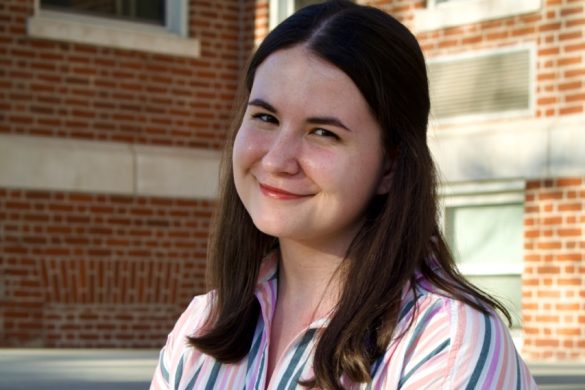Debates have gone far in the United States Congress regarding whether or not the U.S. should follow daylight saving time standards. According to PewResearch, DST occurs twice a year in the U.S. and (in about) one-third of the world’s other countries. The time is adjusted to achieve longer evening daylight in summer by setting the clocks an hour ahead of the standard time. It would be absurd if the U.S. did not follow DST because it allows for more safety, time for outdoor activities, happier people and a better U.S. economy.
DST first came about in 1918 during World War I as an effort to save gas or oil used to fuel lamps by adding an hour more of daylight, according to Britannica’s Pro Con website. However, DST was abandoned shortly after its introduction in 1919. DST became the nation’s standard with the Uniform Time Act of 1966, as the act stated it was “To promote the observance of a uniform system of time throughout the United States,” according to the law’s text. This year’s DST begins on March 10, 2024 at 2 a.m. when clocks “spring forward” one hour, according to Britannica, and will end on Nov. 3, 2024, when clocks will “fall back” to Standard Time, which the majority of the world follows. Britannica reports that in a 2020 poll, “55% of Americans said they are not disrupted by the time change, 28% reported a minor disruption and 13% said the change is a major disruption.” However, for the 13% who do not like the disruption but want the sunlight to become permanent, they should be supporting bills like the Sunshine Protection Act of 2023 (H.R.1279).
According to Congress’s website, this bill would have made daylight saving time the new, permanent standard time. According to The Hill, both the House and Senate versions of the Sunshine Protection Act of 2023 unfortunately did not go very far as, “The Senate bill has been read twice and referred to a committee, while the House bill has only been referred to a subcommittee.” However, other bills have tried to allow states to make the choice of what time standard they use. According to Congress’s website, Bill H.R.1474 was introduced in early 2023 and would have allowed states to elect to observe year-round daylight saving time. It had not moved past its introduction in the House.
Regardless of whether it becomes the new standard time or not, we can still reap the safety benefits of DST with the time changes in the Spring. According to Britannica, longer daylight hours makes driving much safer. More light means lower car accident rates and lowers the risk of pedestrians being hit by cars. The latter seems to speak for itself—if there is more light out in the evening, cars can see pedestrians walking much more easily, which saves lives.
While on the topic of safety, more daylight also means more safe time to be outside after work. Britannica says daylight in the evening makes it safer for joggers, people walking dogs after work and children playing outside. Again, drivers are able to see people more easily. ScienceDirect found in a study that “75% of pedestrian fatalities occur in darkness, and nearly 90% of the increase in pedestrian fatalities from 2009 to 2018 occurred in darkness.” And, when the day is lighter for longer and later, according to Britannica, people tend to participate in more outdoor activities after work. This means more exercise, family time and outdoor games, which in turn can increase physical and mental health.
According to FindLaw, criminal activity is also lowered during daylight hours. FindLaw cites several studies which find a correlation between sunlight hours and decreased criminal activity. In particular, a 2015 study “found a 7% decrease in robberies following the shift to DST, with the largest impact (27%) during the sunset hours directly affected by the shift in daylight. It estimated that the 2007 extension resulted in $59 million per year in social cost of crime savings from avoided robberies.” I believe these statistics are groundbreaking because they suggest DST can do a lot to protect us, and why would we not want to reduce crime?
I have also noticed a narrative on social media which suggests increased sunlight helps with depression. A lack of sunlight can lead to a condition called seasonal affective disorder, sometimes called “winter depression,” according to Johns Hopkins Medicine. This disorder, characterized by low mood, is most common during the winter months when there are fewer hours of daylight. Hopkins Medicine says on their website, “Seasonal affective disorder, or SAD, is a type of depression. It happens during certain seasons of the year—most often fall or winter. It is thought that shorter days and less daylight may trigger a chemical change in the brain leading to symptoms of depression. Light therapy and antidepressants can help treat SAD.”
According to nonprofit media outlet The Conversation, when sunlight hits a specific area of the retina in a person’s eyes, it triggers the release of serotonin (the “feel-good” chemical) in the brain. An increase in serotonin is linked to higher mood levels. DST brings increased daylight hours into the waking and working hours of a day, when most people are active. I—and many others in the U.S.—will quite literally become depressed if DST ever goes away.
Another benefit to DST is the economic boost that sunlight brings. According to Britannica, the golf industry reported that one month of DST was worth $200 to $400 million due to the extended evening time that golfers can play. Additionally, the barbecue industry estimates their profits increase $150 million during one month of DST (and I know, personally, as soon as it feels a bit warmer, I want to have a summer barbecue outside). In 2007, an estimated $59 million was saved because fewer robberies were committed due to the sun being up later. If increased safety, decreased criminal activity and less depression for many people does not already legitimize DST, then the addition of economic boosts sure should legitimize a change in legislation.
Some may argue DST is bad for people’s health due to disrupted sleep schedules, according to Brittanica, but I think the overall safety benefits from the half-a-year outweighs the negatives. Other arguments say productivity drops the week after DST, and it also is expensive for some businesses, but, again, I think the positive variables are more significant than the negative possibilities.
All in all, the U.S. would fare worse if there were no daylight saving time. DST allows for more safety, time for outdoor activities, happier people and a better U.S. economy. If you too are for DST, I would urge you to reach out to your local politicians to let them know how you feel.









